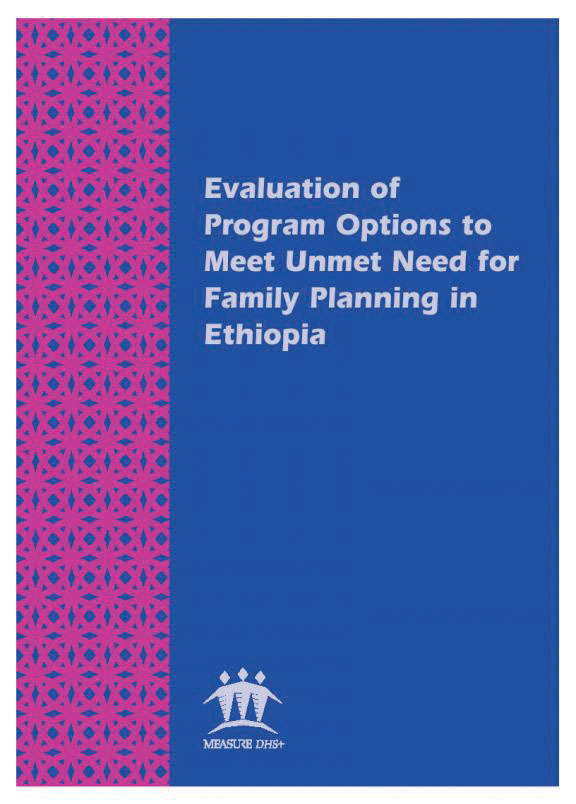- PUBLICATIONS
- JOURNAL ARTICLES
- ACCESS PUBLICATIONS
Publications Summary
- Document Type
- Further Analysis
- Publication Topic(s)
- Family Planning
- Country(s)
- Ethiopia
- Survey
- Ethiopia DHS, 2000
- Language
- English
- Recommended Citation
- Ahmed, Jelaludin and Genet Mengitsu. 2002. Evaluation of Program Options to Meet Unmet Need for Family Planning in Ethiopia. DHS Further Analysis Reports No. 37. Calverton, Maryland, USA: ORC Macro.
- Download Citation
- RIS format / Text format / Endnote format
- Publication Date
- November 2002
- Publication ID
- FA37
Download
 Evaluation of Program Options to Meet Unmet Need for Family Planning in Ethiopia (PDF, 346K)
Evaluation of Program Options to Meet Unmet Need for Family Planning in Ethiopia (PDF, 346K)
